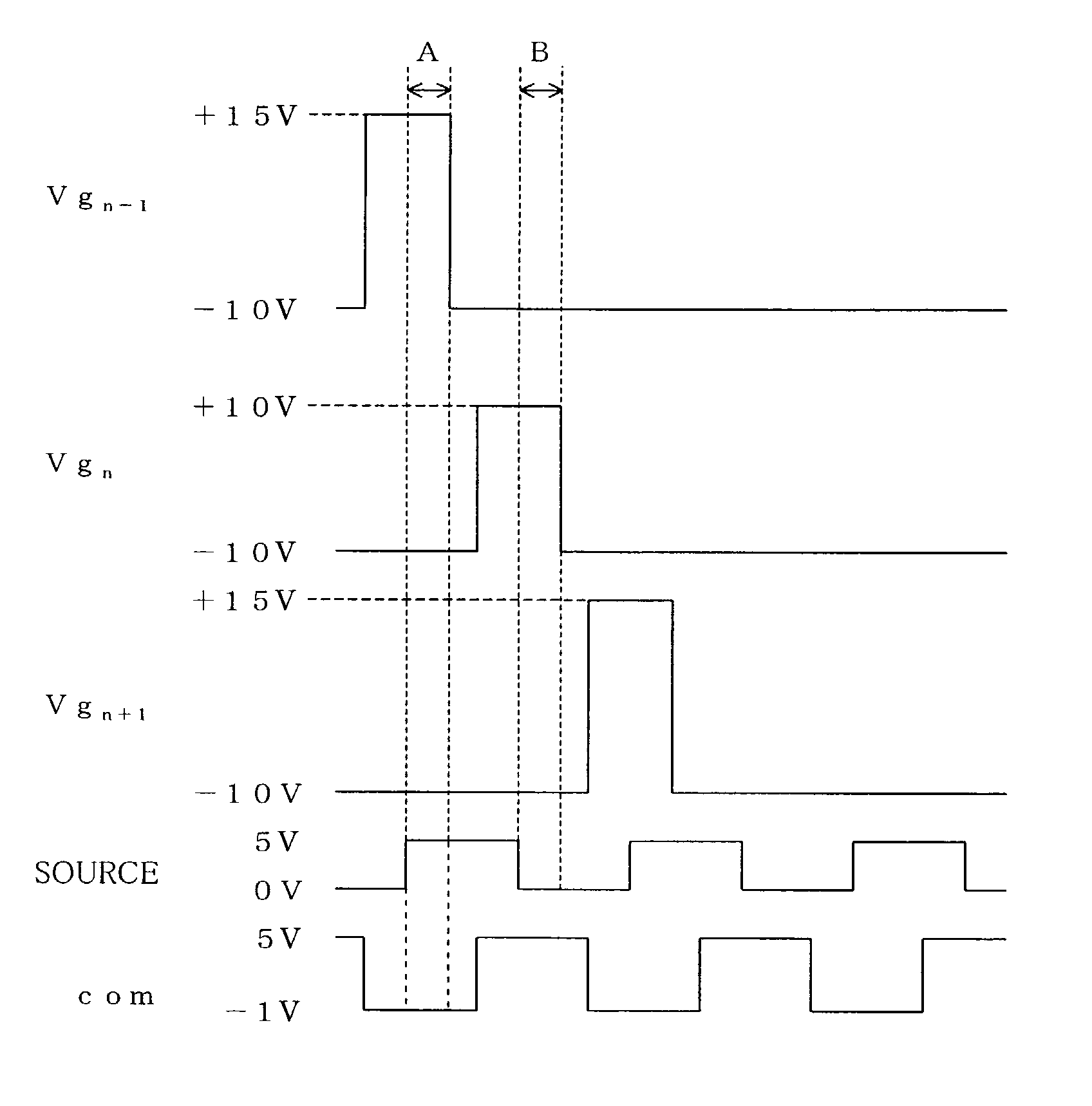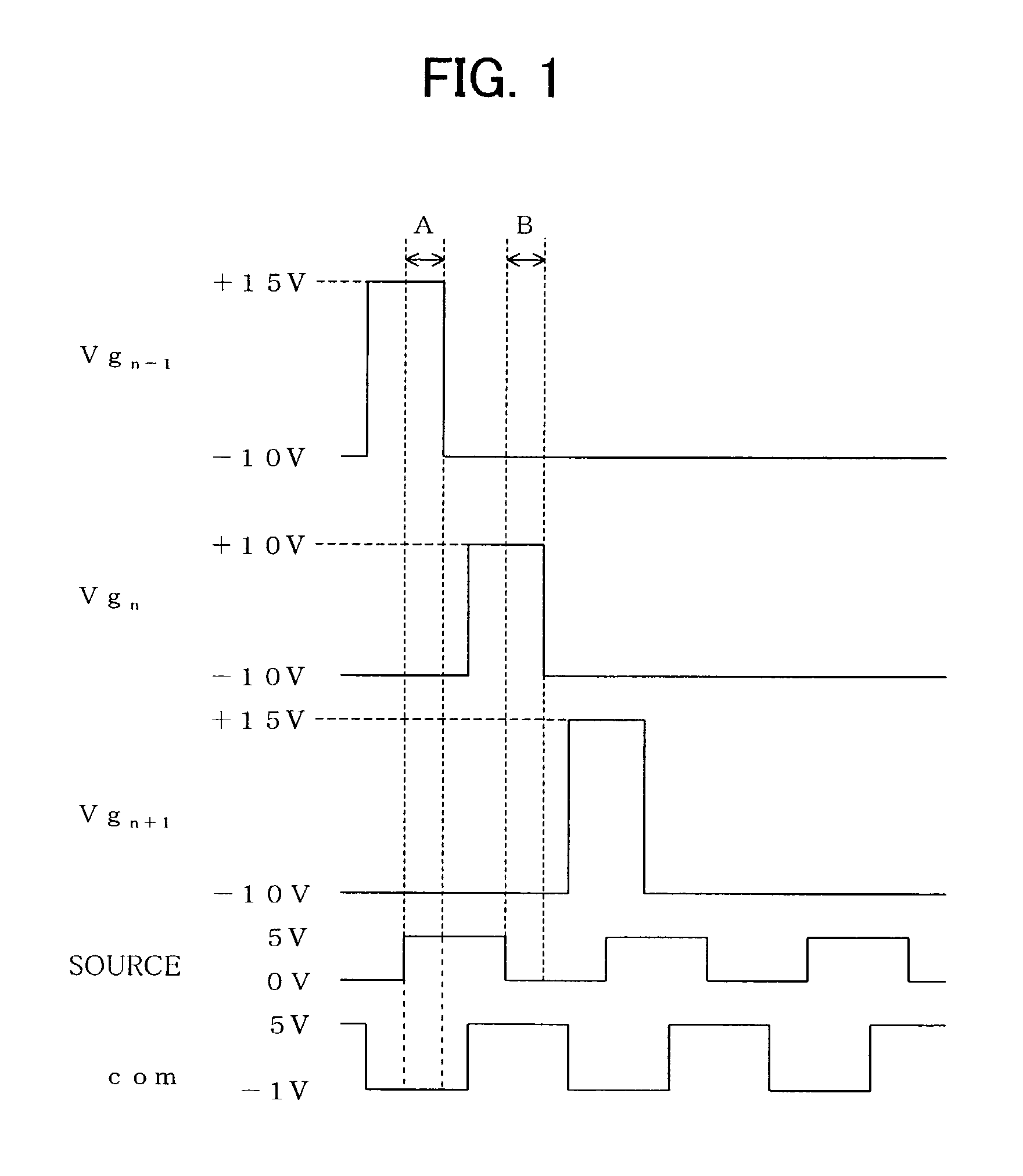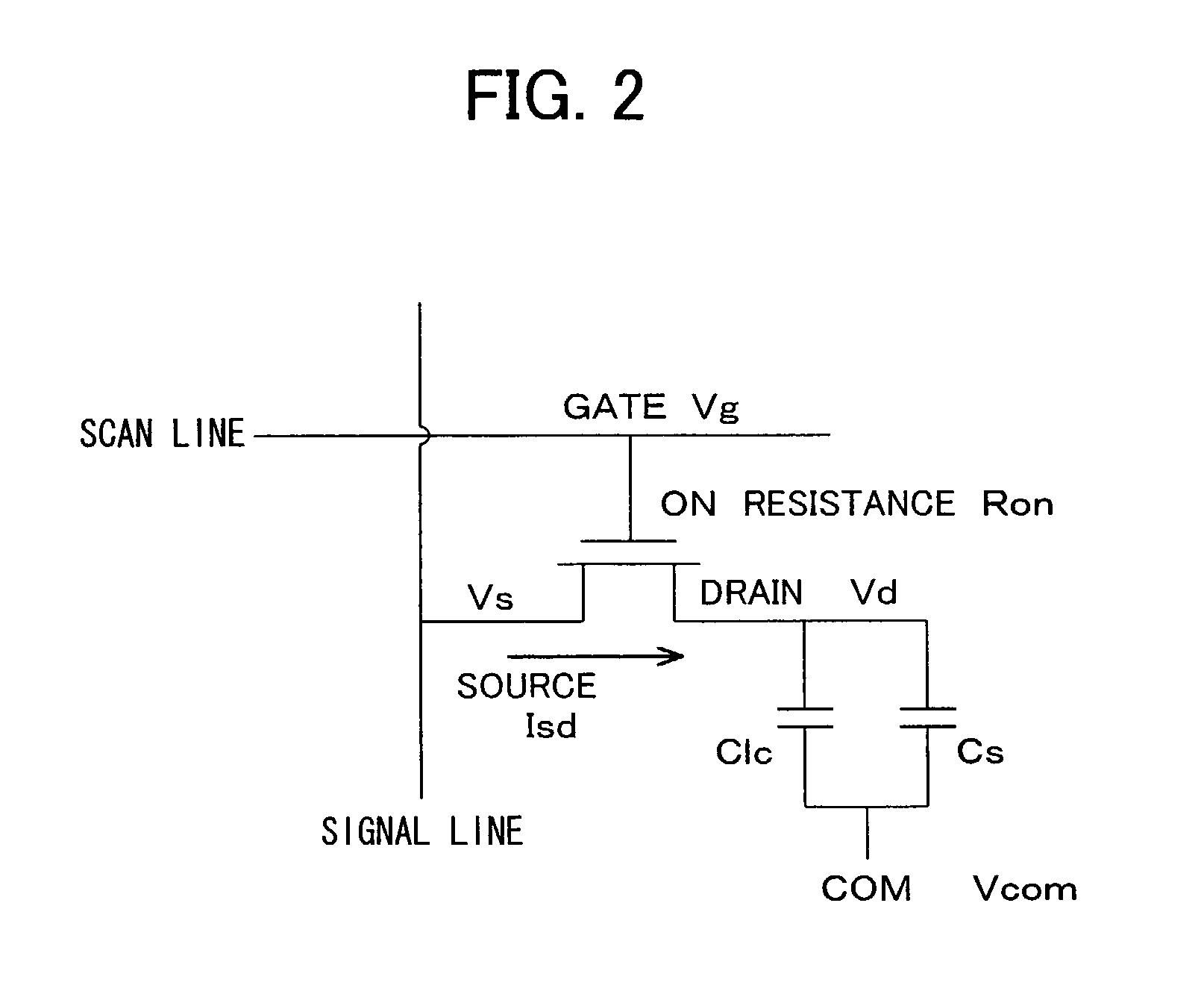Method of driving image display, driving device for image display, and image display
a technology of driving device and image display, which is applied in the direction of electric digital data processing, instruments, computing, etc., can solve the problems of high power consumption of tone voltage producing circuit, use of conventional pulse width modulation drive, and high cost of tone voltage production circuit. , to achieve the effect of good multiple tones and limited power consumption
- Summary
- Abstract
- Description
- Claims
- Application Information
AI Technical Summary
Benefits of technology
Problems solved by technology
Method used
Image
Examples
embodiment 1
[0086]The following will describe an embodiment of the present invention in reference to figures.
[0087]A driving device for an image display in accordance with the present embodiment applies voltages to, and hence drives, pixels in a liquid crystal display (TFT-LCD), so that an image is displayed. The present invention is by no means limited to the present embodiment and applicable to displays which control the display of tones through pixel application voltage values.
[0088]Schematically, an image display 1 in accordance with the present embodiment, as shown in FIG. 18, contains a liquid crystal panel 2, a controller CTL, a power source REG, a scan line driving section GD, and a signal line driving section SD.
[0089]FIG. 2 is a circuit diagram of a pixel (unit pixel) in a liquid crystal panel 2 of the liquid crystal display. In the liquid crystal display, such unit pixels are provided in a matrix form across the panel.
[0090]FIG. 2 also shows part of a driving device for an image disp...
embodiment 2
[0133]The following will describe another embodiment of the present invention in reference to figures.
[0134]A driving device for an image display in accordance with the present embodiment has a similar arrangement to that of the driving device for an image display set forth in embodiment 1. Further, an image display in accordance with the present embodiment has a similar arrangement to that of the image display set forth in embodiment 1. The present embodiment differs from embodiment 1 in timings of temporal changes of the scan line voltage, the signal line voltage, and the common voltage. The following will describe these differences.
[0135]Now, the operation of the driving device for an image display in accordance with the present embodiment in the arrangement will be described in reference to figures.
[0136]FIG. 6 is a timing chart showing temporal changes of the scan line voltage, the signal line voltage, and the common voltage, where “Vgn” and “Vgn+1” indicate scan line voltages ...
embodiment 3
[0161]The following will describe another embodiment of the present invention in reference to figures.
[0162]A driving device for an image display in accordance with the present embodiment has a similar arrangement to that of the driving device for an image display set forth in embodiment 1. Further, an image display in accordance with the present embodiment has a similar arrangement to that of the image display set forth in embodiment 1. The present embodiment differs from embodiment 1 in timings of temporal changes of the scan line voltage, the signal line voltage, and the common voltage. The following will describe these differences.
[0163]Now, the operation of the driving device for an image display in accordance with the present embodiment in the arrangement will be described in reference to figures.
[0164]FIG. 7 is a timing chart showing temporal changes of the scan line voltage, the signal line voltage, and the common voltage, where “Vgn” and “Vgn+1” indicate scan line voltages ...
PUM
 Login to View More
Login to View More Abstract
Description
Claims
Application Information
 Login to View More
Login to View More - R&D
- Intellectual Property
- Life Sciences
- Materials
- Tech Scout
- Unparalleled Data Quality
- Higher Quality Content
- 60% Fewer Hallucinations
Browse by: Latest US Patents, China's latest patents, Technical Efficacy Thesaurus, Application Domain, Technology Topic, Popular Technical Reports.
© 2025 PatSnap. All rights reserved.Legal|Privacy policy|Modern Slavery Act Transparency Statement|Sitemap|About US| Contact US: help@patsnap.com



